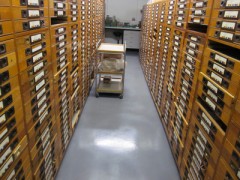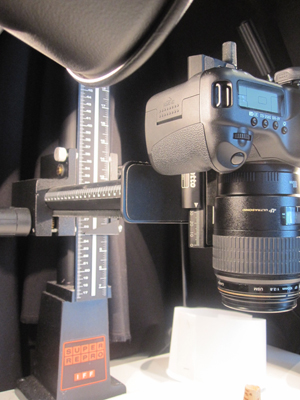By Alexis Tindall, South Australian Museum.

Image courtesy of Alexis Tindall
The Australian Museum and the South Australian Museum are exploring the use of volunteers to help digitise the museums’ collections. The museums’ specimen collections are a rich source of biological information and the project aims to unlock the information held in these collections, making it more widely accessible and useable. The project is called Rapid Digitisation Using Volunteers.
The project, funded by the Atlas of Living Australia, is exploring and documenting what volunteer capacity and equipment is optimal for each institution and its digitising needs.
The AM is focusing on rapid digitisation of specimens, specimen labels, registers and field notes. SA Museum is focusing on documenting and photographing its terrestrial invertebrate holotype collection. Both museums have recruited digitisation officers to roll out the digitisation projects.

Image courtesy of Alexis Tindall
The SA Museum recently recruited volunteers to work on the Rapid Digitisation project. More than 100 people presently volunteer at the SA Museum, working in a vast array of roles, but not specifically in digitisation.
In promoting this new opportunity, SA Museum targeted students of science and entomology, digital photography and new media, and people who have previously volunteered on biodiversity projects.
The SA Museum received more than 60 applications for the 20 unpaid positions that were on offer. The quality of the applications was amazingly high, and the SA Museum found it a near impossible task to narrow down to a group for interview.
The range of applicants included people with a professional background in laboratories and biological imaging, those with entomology and zoology qualifications, and visual artists who had previously worked with zoological, invertebrate or botanical specimens. SA Museum also discovered an enormous community of amateur macro photographers with an interest in insects and arachnids.
In the past the SA Museum has benefited from a number of volunteers who are able to commit 4 or 5 days per week for many years. While this is excellent ongoing support for the museum, this new team will work differently. This group is likely to work for a limited period on a focussed project to advance their professional skills and networks, learning something new, meet others who are interested in biodiversity and contribute to the ALA as a project that they consider important.
The current project will carry through to December 2011. SA Museum will then have tested processes, high quality equipment and a template plan for rapid digitisation projects which can be implemented in other parts of the collection.
Learn more about the Atlas’ imaging activities. Read »